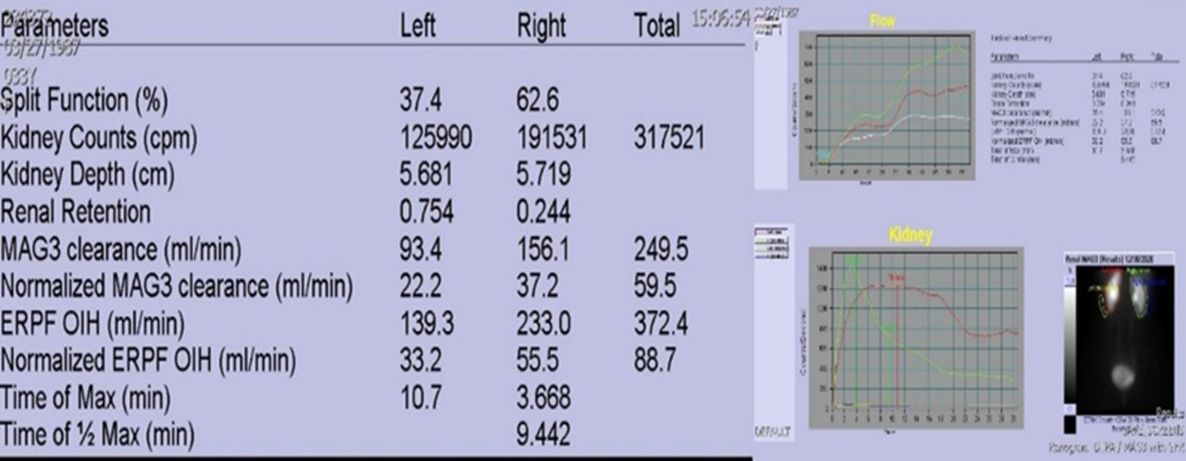The Utility of Radioisotope Renography in Assessment of Renal Function: A Single - Center Experience
Authors
##plugins.themes.bootstrap3.article.main##
Abstract
Background: A growing body of evidence has demonstrated the utility and reliability of 99mTc-mercaptoacetyltriglycine (99mTc-MAG3) diuretic renography in a wide range of renal disorders.
Methods: In this retrospective study, we retrieved the medical records of patients who were referred to the Radiology Department of King Abdulaziz Specialist Hospital, Taif, Saudi Arabia due to suspected renal disease and were scheduled to undergo 99mTc-MAG3 diuretic renography during the period from January 2020 to November 2021.
Results: The medical records of 280 patients were retrieved. Most of the patients had either suspected obstructive (n = 80; 28.6%) or non-obstructive hydronephrosis (n = 60; 21.4%). The left kidney was affected in more than half of the patients (n = 155; 55.4%). In terms of split kidney functions, the right kidney had a median function of 50.9 (38.5–75.5); overall, 39 (69.6%) had good right kidney function. The left kidney had a median function of 49.4 (24.5–61.5); overall, 33 (58.9%) had good left kidney function.
Conclusion: Radioisotope renography is a useful tool for assessing renal functions in real-life settings. The technique provides a safe and easy-to-use tool that can guide the management approaches of patients presenting with renal diseases. It can reduce the interval from presentation to definitive diagnosis and ensure the prompt initiation of therapy after diagnosis. The present study’s results indicated that radioisotope renography was useful in providing reference values and visual interpretation of impaired renal function, obstructive uropathy, renal stenosis, and acute tubular necrosis. Nonetheless, as the current literature reveals a significant impact of operator experience on the reliability of radioisotope renography, regular reader training is encouraged.
##plugins.themes.bootstrap3.article.details##
Copyright (c) 2022 Amin Elzaki

This work is licensed under a Creative Commons Attribution 4.0 International License.
Creative Commons License All articles published in Annals of Medicine and Medical Sciences are licensed under a Creative Commons Attribution 4.0 International License.

